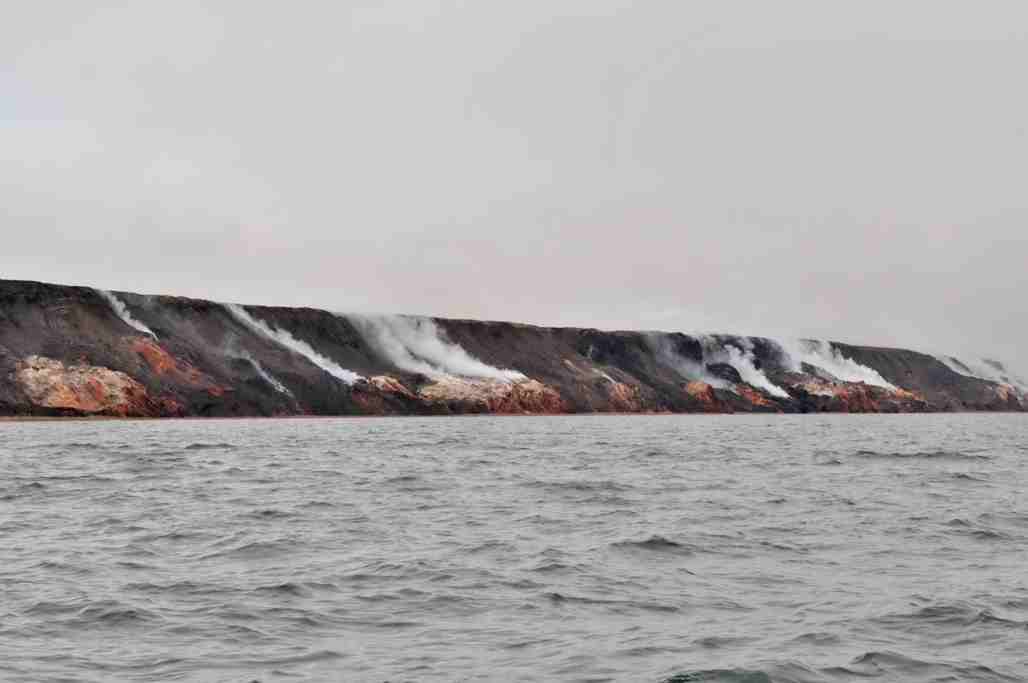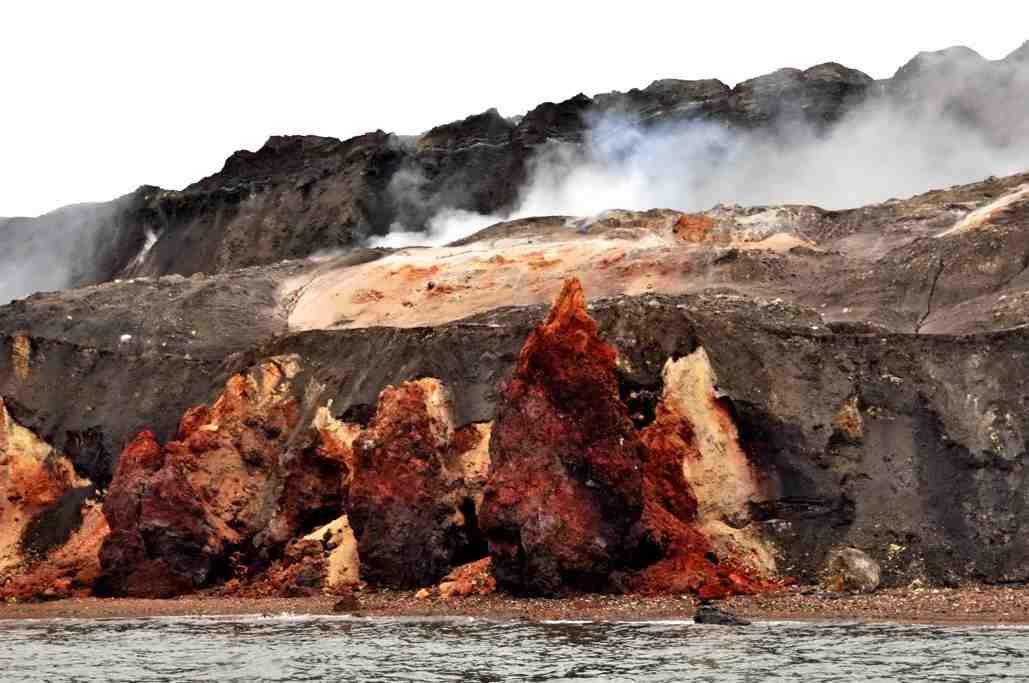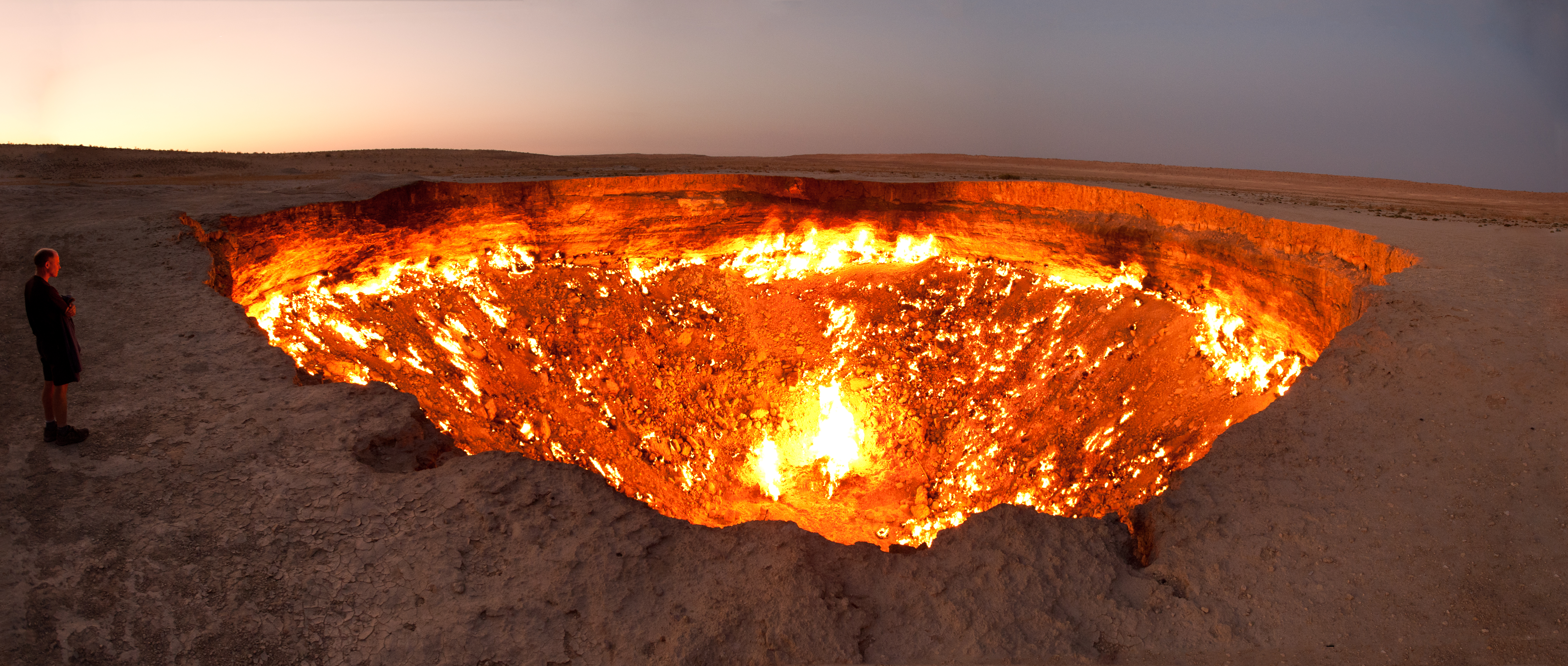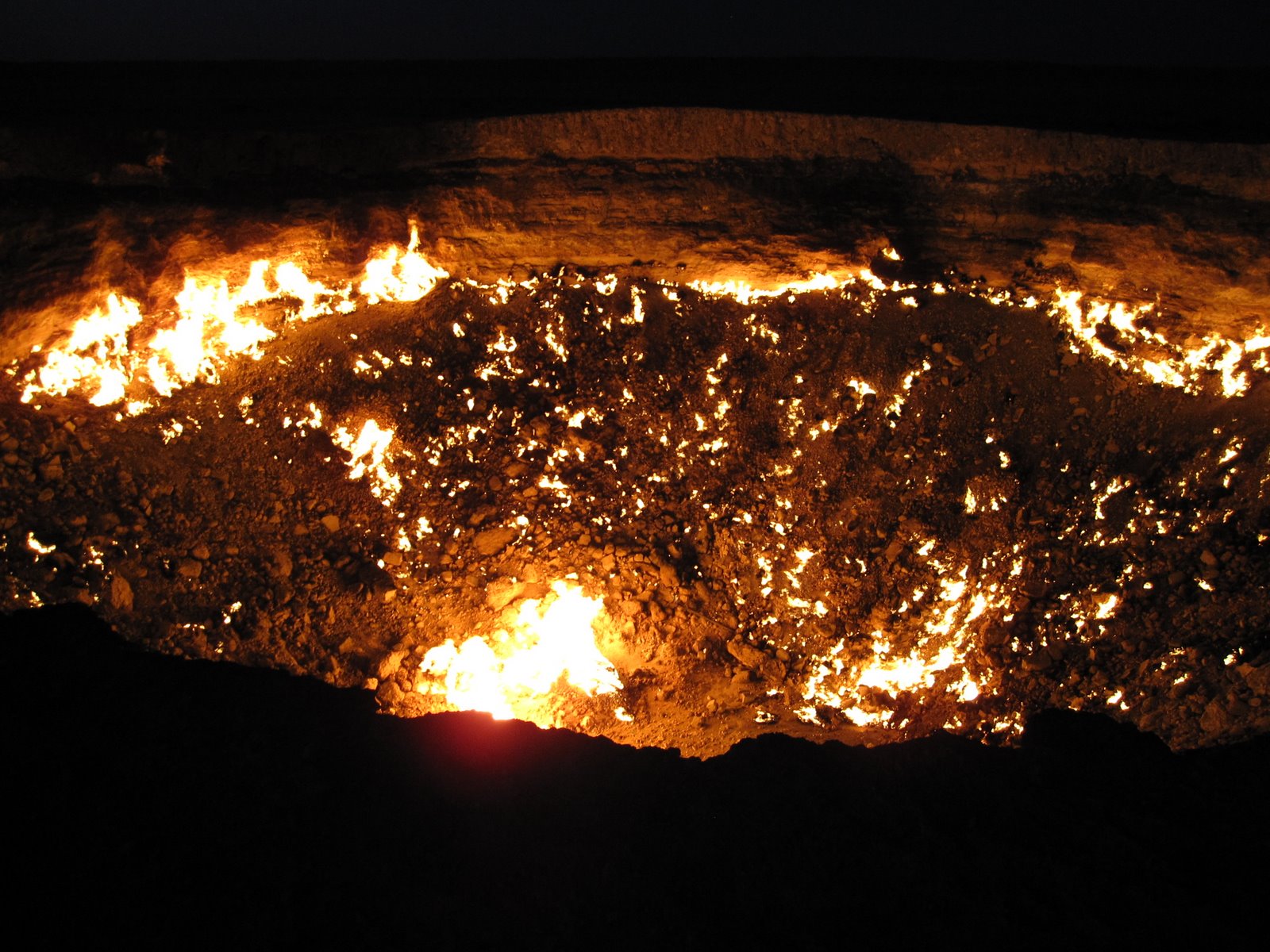Doors to hell: Four places on Earth that don't stop burning
Digital Reporter
Tuesday, October 13, 2015, 12:46 PM - Fire is supposed to go out eventually.
That's the regret of campers, and the hope of forest firefighters, that sooner or later, on their own or by human agency, the flames are quenched.
But there are places on Earth where the flames either always burn, or are always smouldering. Here are the four freakiest.
The Smoking Hills, Northwest Territories

"Smoking Hills AXW 0129" by Ansgar Walk - Own work. Licensed under CC BY-SA 3.0 via Wikimedia Commons.
The desolate Arctic isn't where you'd expect to find a never-ending flame, particularly in the more northern areas where there are no trees.
So when the men of the Arctic expedition of Capt. John McClure, one of many sent to seek the doomed Franklin Expedition, sighted smoke on the horizon in 1850s, they thought they'd found the camp of Franklin's lost crew, according to CBC.
They were rudely disabused of that notion when they arrived at the site on Cape Bathurst, and found not survivors but a smouldering hellscape.

"Smoking Hills AXW 0159" by Ansgar Walk - Own work. Licensed under CC BY-SA 3.0 via Wikimedia Commons.
Science-wise, the hills are smoking because they are made up of shale and pyrite packed with carbon and sulfur. As the cliff erodes, they spontaneously ignite, and have likely been doing so for centuries.
When some of the crew bought a sample back to McClure's desk, it reportedly burned a hole in his desk.
As for the landscape, it's pretty to look at from the air, but we wouldn't recommend spending too much time on the ground. The smoke is toxic, with the sulfur turning into sulfur dioxide, and the surrounding ponds are quite acidic.
Door to Hell, Turkmenistan
Turkmenistan is a country in Central Asia, and its largely arid countryside has a feature that looks for all the world like the gaping maw to the netherworld.

"Darvasa gas crater panorama" by Tormod Sandtorv - Flickr: Darvasa gas crater panorama. Licensed under CC BY-SA 2.0 via Commons.
Properly called the Darvaza Crater, it isn't actually the devil's doorstep, despite appearances. The sparsely populated nation, which gained independence after the fall of the Soviet Union, is blessed with large reserves of natural gas, and that's where the story of the hole begins.
Unlike Canada's Smoking Hills, the door dates back not centuries, but decades. Most sources say the real story is a little confused, but the most commonly related tale traces it back to a Soviet team exploring for natural gas.
Their plans went awry when a drill rig was swallowed up by the ground, falling into a cavern. But it's on fire now because the Soviets did that deliberately; They set it alight to burn off toxic gases.

"Central Asia 101" by Stefan Krasowski - Flickr: Central Asia 101. Licensed under CC BY 2.0 via Wikimedia Commons.
Canadian explorer George Kourounis, host of Angry Planet, is believed to have been the first to set foot within the burning crater, an experience he described in detail to National Geographic in 2014.
"I described it as a coliseum of fire—just everywhere you look it's thousands of these small fires," he told the magazine. "The sound was like that of a jet engine, this roaring, high-pressure, gas-burning sound. And there was no smoke. It burns very cleanly, so there's nothing to obscure your view. You can just see every little lick of flame."
Incredibly, Kourounis took some samples from the bottom, and found bacteria living there that weren't present in the soil outside the crater.

"Darvasa gas crater 1" by Tormod Sandtorv - Flickr: Darvasa gas crater #1. Licensed under CC BY-SA 2.0 via Wikimedia Commons.
"Outside of our solar system, there are planets that do resemble the conditions inside this pit, and [knowing that] can help us expand the number of places where we can confidently start looking for life outside of our solar system," Kourounis says.
As for here on Earth, you can go visit if you want (the Turkmen government is trying to develop it as a tourist attraction), and Kourounis says there's not even so much a railing. So you can stand as close to the real-life hellmouth as you want.
Baba Gurgur, Iraq
You may have some trouble taking a tourist jaunt to this "eternal flame" near the northern Iraqi city of Kirkuk, given the ongoing fighting in that part of the world.

We haven't been able to find out how long it's been burning, but an 1839 issue of the American Journal of Science and Arts has a pretty good description of what you'll find if you head over there.
The explorer who wrote that entry described smokeless flames, smelling strongly of sulfur, issuing forth from several holes in the ground at the bottom of a small, 50-foot-wide depression.
The government of the day made some cash from selling the sulfur in the area. It became an even bigger windfall when a major oilfield was discovered there in 1927, at the time the largest in the world.

"P3110004" by Original uploader was Chad.r.hill at en.wikipedia - Transferred from en.wikipedia; transferred to Commons by User:Pline using CommonsHelper.. Licensed under Public Domain via Commons.
But there's evidence the fire has been burning for thousands of years. Mother Nature network says early fire-worshiping religions in the area revered the site, with pregnant women visiting it to pray for male children.
Amusing Planet says it may have been mentioned in the works of the Greek historian Herodotus, and it may have made an appearance in the Bible -- Some theorize it's where the Babylonian king Nebuchadnezzar threw Hebrew dissenters for refusing to worship idols.
Quite a history, but what would you expect from a flame that's been burning that long?
Centralia, Pennsylvania
This conflagration has been smouldering for more than 50 years, though its underground location belies its true extent.

"Centralia, Pennsylvania 2003 (7)" by Doug Kerr from Albany, NY, United States - Picture 254
Uploaded by GrapedApe. Licensed under CC BY-SA 2.0 via Wikimedia Commons.
It started in May, 1962, when firefighters set fire to a landfill as part of a cleanup effort. Problem: The dump was located atop an abandoned strip mine, and that part of the United States is famously rich in coal. The firemen failed to extinguish the flames before they reached its buffet of coal seams.
We're more than half a century on, and its still burning, eating its way through the surrounding countryside, largely immune to repeated attempts to stop it.
Sinkholes abound (a 12-year-old boy who was devoured by one in 1981 only saved himself by clinging to tree roots until help arrived, National Geographic recounts). Toxic fumes emit from the ground in some places. Many roads and at least one rural highway are all but shut down, riddled with crevasses and indentations as the ground below collapses (it's not all bad. Here's what one graffiti covered highway looks like by drone:)
If you're wondering why there seem to be so many lots filled with nothing but trees in the video above, that's because almost all of Centralia's 1,100 residents took advantage of a government buyout program and moved out. Their former homes were levelled.
But incredibly, at least eight people refused to leave. They wanted to stay so much, they actually sued the government for the right to remain. According to a website dedicated to the town, the lawsuits lasted for years before officials relented, allowing the holdouts to stay in the town they called home.

"Smoke hole" by Mredden at the English language Wikipedia. Licensed under CC BY-SA 3.0 via Wikimedia Commons.
Once they finally pass on, the town will truly be empty, and the fire will long outlast its cracked highways and empty lots. According to Smithsonian Magazine, there's enough coal in the area to sustain the fire for another 250 years at least.
SOURCES: CBC | University of Guelph | National Geographic | The Guardian | American Journal of Arts and Science | Amusing Planet | Mother Nature Network | CentraliaPA.org | National Geographic | Smithsonian Magazine



